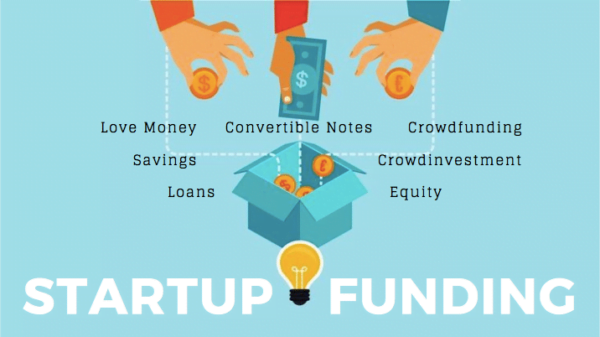Which is the Best Strategy to Fund Your Startup: Bootstrapping or Funding?

Which is the Best Strategy to Fund Your Startup: Bootstrapping or Funding?
A startup is a business just getting ready to create and provide services and goods that are not yet on the market. The startup sector is increasingly playing a big role in the economies of all nations, creating jobs for today’s youth and bearing huge responsibility.
They make a major contribution to improving the nation’s socio-economic situation. Not only that, but they are also offering solutions to the issues by employing new technology. New startups appear in every area, and some of them will shape that sector’s future.
A startup’s survival depends greatly on funding availability; without it, the business will fail even before it gets off the ground.
Setting up money and investing in the firm must avoid being shut down. These can be done in one of two methods.
The first involves bootstrapping, and the second involves startup funding.

What is a Bootstrapped Startup?
Bootstrapped startups are those companies that rely entirely on their own cash for their survival and expansion, not receiving any funding from outside sources or venture capitalists. There is no method for obtaining external finance in this situation; as the leader, you must make every choice that is necessary for your company.
Pros and Cons of a Bootstrapped Startup
The Pros of Bootstrapping for Startups
1) Ownership of Your Business
Bootstrapping allows a sole proprietor to maintain complete ownership of their company. Even if you have one or two co-founders, your equity stake will be far larger than if you raise money in many rounds and continually lose control. Your stake may be worth more even with a lot smaller business and lower revenues than if you raised money to reach a billion-dollar valuation.
2) Control Over Direction
As soon as you accept outside funding, you are subject to external pressure and are responsible for advancing other people’s interests. They could not be at all what you envision. Their values might not match yours. Super-voting rights are one solution that might give you more power when raising funds. However, bootstrapping is the best option if having creative control and direction is your main objective.
3) Keeping Your Business
Bootstrapping is what you want if you plan to keep this as a lifetime business and possibly even pass it down through several generations. Otherwise, outside investors will put you under pressure to make an exit, typically within ten years.
4) Sense of Accomplishment
For some entrepreneurs, the ability to one day look at this venture and say, “I built that!” is where they get their sense of significance.
5) Being Forced to Build a Business Model That Really Works
It’s no secret that many of today’s biggest-valuation, fastest-growing businesses and even IPO have been losing money, at least in writing. They are using a different approach to the game. One with a strong potential for success but carries significant risk. If you plan to bootstrap, you must create a successful business model that can immediately generate positive cash flow and profits. From there, anything else may be expanded upon.
The Cons of Bootstrapping for Startups
1) Chances of Survival
Running out of cash is one of the main causes of business failure. It’s a lack of cash flow. You could offer a fantastic and in-demand good or service that people adore.
However, your firm may never reach its full potential if you experience a crunch for only a month or two. To survive, smart budgeting will be necessary. If your budgeting indicates that obtaining external funding is necessary at some point, be ready and have 15 to 20 slides with your pitch ready to persuade investors swiftly.
2) Growth
The key motivation for entrepreneurs to raise a lot of money is to scale quickly and significantly. That serves as many people’s plan for surviving and thriving. Without outside funding, your marketing, public relations, and customer service options would be constrained. All of that can limit one’s ability to grow.
3) Top Level Help
Cash is merely one advantage of startup funding. Even so, it might not be the most important. Including those who have a stake in your success can result in exceptional assistance. It can put influential people who control major sales channels, board members, shareholders, and large deal makers in your corner and make them fight for you.
4) Hard Work
As a bootstrapped company, you’ll need to work far harder, longer hours, and in more jobs. Less money will be available for attempts to retain top employees and to hire the finest candidates. Your stock options may not be very valuable.
5) Staying Organised
When you have a smaller staff and are a determined entrepreneur working hard to gain traction, it’s common for the fundamentals to fall behind as filing taxes, systematising procedures, and bookkeeping. When it comes to submitting tax returns, trying to grow, and if you decide you actually need or want to raise money, those can come back to haunt you.
Examples of a Bootstrapped Startup

GoPro
Jill Woodman and Nicholas Woodman launched this business in 2002. It is now regarded as one of the leading names in the market for selling personal cameras that take video pictures. It started as a profitable bootstrapped startup and has grown into a major business offering high-definition personal cameras.
While on a surfing trip to Australia, Nicholas Woodman had the inspiration to create such cameras that can capture action photography. He gave his company $10,000 in cash out of his own pocket. He worked many jobs, including driving a truck and sending emails, before finally finding success. His business, GoPro, sold the first analogue 35mm camera in 2004.

Zerodha
One well-known illustration of a bootstrapped startup in India is Zerodha, a financial services company established in 2010 by Nithin and Nikhil Kamath. Nithin Kamath began stock trading when he was 17 years old. He lost 5 lakh rupees during the 2001–2002 market meltdown. He eventually established his own brokerage firm, Kamath & Associates, while still carrying on with his stock trading. He established Zerodha in 2010.
The company is valued at $2 billion and has revenues of 1,093.64 crores of Indian rupees. In a series of tweets, the creator of Zerodha outlined the reasons why the business doesn’t seek outside investment.

What is a Funded Startup?
A certain sum of money is needed as an investment when beginning a firm. Some new businesses choose to raise funds from the general public to help finance their operations. Look for investors, usually called venture capitalists, who are interested in your firm and who will give you the necessary funds in exchange for equity in your business.
Pros and Cons of a Funded Startup
The Pros of Funded Startup
1) Easy access to business capital
There are financial institutions whose main function is to provide business financing. This includes bank loans and investors. The amount of capital you need may depend on the scale of the enterprise you plan to start. Institutions set a specific time limit for loan repayment. If the company is profitable, you can repay the loan within the agreed-upon time frame.
2) Brings experts on board
One benefit of startup funding is the chance to network and acquire knowledge. They provide technical expertise that could benefit your company. They are always on the ground to monitor the progress both before and after receiving the funding. They aim to see your company flourish and be safe from potential threats. Anytime is a good time to seek advice on company concepts. Better decisions are therefore made.
3) Additional benefits
Startup funding sources assist businesses in court. Investors would prefer you obey the law so that their company is not in danger. This guarantees corporate compliance.
4) Networks and linkages
Many investors are drawn to startup funding. You are exposed to the outside market by investors. Through referrals, more customers may be attracted. The network provides the chance to connect with persons who have excellent ideas, are prepared and eager to share their expertise to benefit your company.
The Cons of Funded Startup
1) External control
Rest assured that investors will have complete control over every penny you receive from them. Investors must monitor since nobody wants to lose money. Investors will always be able to influence your company. Their ownership stake in your company is determined by the money you get from them.
2) Minimal business ownership
Keep in mind that investors own the business’s capital. Therefore, they will possess part of the management of the company. They eventually start telling you what to do. No ownership until you have paid back their money in full.
3) Time wastage
Due to the processes and procedures involved, looking for sources of startup funding may take quite a while. The act of running up and down stairs is really tiresome. It takes a lot of time to chase after money when that time would be better spent finding customers and learning about their needs. In bootstrapping, time is intelligently used to identify potential customers, get to know them, or research market trends in the vicinity of your firm to increase revenue.
4) Burden to agreements
You must return every cent that an investor gave you. Before they lend you money, they make you sign a tonne of paperwork outlining the repayment terms. Add your signature to the document to demonstrate that you adhere to the funding’s terms and conditions. Unfavourable consequences may result if they are broken.
5) Some advice is given that it is not viable
Not every investment proposal you receive is worthwhile. They usually provide you with suggestions that will benefit their firm rather than yours. Before implementation, you ought to be knowledgeable.
Example of a Funded Startup

Flipkart
Binny and Sachin Bansal established this website for online shopping in 2007. The online e-commerce business began by selling books and now provides everything. Flipkart received its initial funding in 2018 from Junglee and Ashish Gupta, the founder of Helion Venture. After that, Tiger Global Management gave Flipkart $10 million. An American investing company called Tiger Global Management.
Flipkart continues to grow thanks to a variety of investor funding. Even Myntra was bought by it in 2014 for $270 million. Walmart bought Flipkart in 2018 and took over as the company’s financier; as of this writing, Walmart holds a nearly 82.3% share in the Indian e-commerce behemoth. It has over $12.6 billion in funding. According to reports, Flipkart is worth $37.6 billion as of 2021.

Funding Vs Bootstrapped Startup: Factors That Entrepreneurs Must Consider
One must choose between funding and bootstrapping depending on what they want for their company. Here, they must consider a few variables that will aid them in choosing between funding and bootstrapping. Those factors are:
Objective
One of the key elements that aid you in choosing your startup’s future is your company’s main goal. The bootstrap approach is the best choice if you want a successful business. On the other hand, external investment is the solution if you want your company to see the greatest possible sales growth.
Pace of Growth
The growth rate will be slower if you are the only investor in your company. Because all your resources—including your financial ones—are finite, sponsored businesses have access to resources like new contacts and money; the growth is significantly faster.
Control
In a bootstrapped startup, you are in charge of the business. Your call is the final one, whatever the crucial choice may be. On the other hand, because the decision will affect the investors who are funding your company, funded businesses don’t give you as much leeway in making the final choice for your startup.
Conclusion
The choice between funding and bootstrapping is ultimately yours. If you choose to bootstrap your business, you can still apply for capital in the future. Whatever you decide to do, remember that your company’s survival depends on it, so consider all relevant considerations before making your choice.




